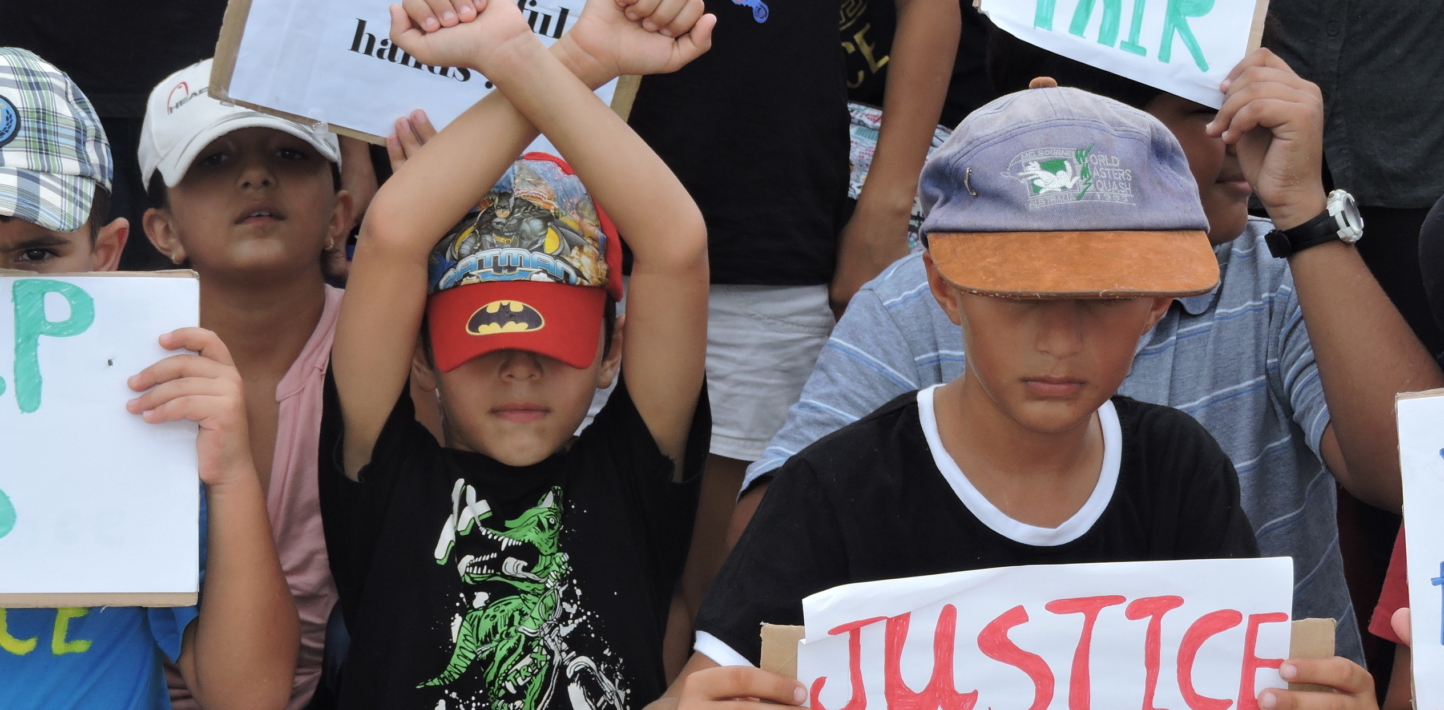“I have lumps in my breasts, in my throat, and in my uterus…” – Halimeh spoke softly, but as she quickly uttered these words, I noticed an immense sadness in her dark brown eyes. We were sitting on the rocks near the ocean, wary of wild dogs barking nearby, and melting in the scorching heat of this remote Pacific island. I could feel her fear, so common for any woman in her 30s who checks her breasts in the morning and knows something isn’t right.
Halimeh fled Iran three years ago, after she said several of her friends got executed there, because they converted to Christianity, something that she wanted to do as well. She aimed for Australia—a country where she was hoping to find peace and freedom from religious persecution. Instead, after a gruelling journey through Malaysia and Indonesia, a dangerous ocean crossing on a smuggler’s boat, and six months in immigration detention on Australia’s Christmas Island, she got sent to Nauru—a tiny, remote island state where Australia has been for years banishing asylum seekers trying to reach its shores.
Like many people around the world, I was repulsed by the sheer scale and inhumanity of the abuses and neglect documented in the Guardian‘s recent “Nauru Files” exposé.
But for me the leaks struck a particular chord since I had only last month witnessed these patterns of horrendous abuse with my own eyes. It brought back the thoughts about Halimeh and the other 57 people I interviewed during the week I spent on the island. Women, men and children with personal stories to make even the most emotionless readers shudder; people who fled wars, who lost family members and friends, who were tortured by repressive regimes, and who are now stuck on Nauru, in anguish and despair about their future.
Like many people around the world, I was repulsed by the sheer scale and inhumanity of the abuses and neglect documented in the Guardian's “Nauru Files” exposé. But for me the leaks struck a particular chord since I witnessed these patterns of horrendous abuse with my own eyes
Anna Neistat, Senior Director for Research at Amnesty International
More than 1,200 women, men and children from countries such as Iran, Iraq, Pakistan, Somalia, Bangladesh, Kuwait, Afghanistan, spent months or years in appalling conditions in a detention camp funded by Australia. They lived in crowded, mouldy tents, where guards conducted regular, prison-like searches, and limited their showers to two minutes, before forcing them out.
With no prospect of leaving this impoverished island – which is smaller than many airports I have travelled through – these hundreds of people are effectively facing a future of indefinite, arbitrary detention. As a result, they are breaking down physically and emotionally. Although I’ve worked in most of the conflict zones around the world over the last 15 years, I have never seen such high rates of mental trauma, self-harm, and suicide attempts—among children as well as adults.
Health problems are simply not being addressed—I spoke with people who suffered several heart attacks, major complications from diabetes, kidney diseases, untreated broken bones, and infections. In most cases, they only got blood tests and Panadol.
More than 1,200 women, men and children from countries such as Iran, Iraq, Pakistan, Somalia, Bangladesh, Kuwait, Afghanistan, spent months or years in appalling conditions in a detention camp funded by Australia.
Anna Neistat
Halimeh told me that in 2014 she was sent to Melbourne, and spent four months there, between an immigration detention camp and a hospital. “My doctor said I need surgery for my breasts,” she said, her gaze fixated on the ocean in front of us. “He said I cannot go back [to Nauru], but the immigration decided to bring me back anyway.” Her condition continued to deteriorate – in 2015 they sent her to Papua New Guinea for an endoscopy and a colonoscopy, confirmed some of her medical problems… and sent her back to Nauru again.
Now the lumps are growing and she has a worrisome discharge from her breasts—but Australia is denying her treatment or even a proper check-up.
As unthinkable and inhumane as it sounds, this neglect appears to be part of the strategy. Australian politicians have been adamant that they will never allow the refugees sent to Nauru to settle in Australia. “I feel they keep us as hostages” Halimeh said. “They make us suffer as an example to others who might think of fleeing to Australia.”
…as remote as Nauru is, it’s actually much closer than one might think—right-wing European politicians have been touting the “Australian model” of offshore asylum processing as a solution to the European refugee “crisis”.
Anna Neistat
What’s worse, as remote as Nauru is, it’s actually much closer than one might think—right-wing European politicians have been touting the “Australian model” of offshore asylum processing as a solution to the European refugee “crisis”. Under the same pretext of “saving lives,” European countries are already closing borders, striking deals with states, such as Turkey, that cannot offer refugees adequate protection, and outsourcing their responsibilities.
The latest detailed exposure of what this “Australian model” is like in reality, which has received extensive coverage in Europe, is significant. For hundreds of refugees in Australia’s offshore prisons, it brings renewed hope that Australia will finally fulfil its international obligations and allow them to settle in a place where they can get the assistance they need and the protection they deserve.
For Halimeh, it means she might still get vital surgery and treatment before it’s too late. And for any European state contemplating similar measures, it is a clear warning of just how wrong things go when fear and populist agendas are allowed to trample core humanitarian values and the international right to seek asylum.
TAKE ACTION!
Demand the Australian Government ends the secret abuse in Nauru
This piece originally appeared in The Guardian Australia.


